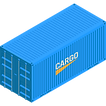Daviteq Technologies
SUB-1GHZ
Sub-1GHz refers to wireless communication technologies operating in the license-free ISM bands below 1 GHz (typically 433 MHz, 868 MHz in Europe, and 902–928 MHz in North America). Unlike standardised LPWANs such as LoRaWAN® or Sigfox, Sub-1GHz networks are usually proprietary — meaning companies design their protocols, modulation schemes, and network topologies to meet specific needs. It is widely used for low-power, mid-range communication where Wi-Fi or cellular is not practical.
How Does Sub-1GHz Work?
The flexibility of Sub-1GHz lies in its customizable protocol — developers can optimise for longer range, higher throughput, or lower latency depending on the use case.

1. End Devices (Sensors & Nodes)
IoT devices equipped with Sub-1GHz RF modules (using FSK, GFSK, OOK, or proprietary modulation) collect data such as temperature, motion, or equipment status. They transmit packets over the unlicensed sub-GHz band.
Example: A door sensor sends an “open/close” signal to the network.
2. Gateways / Coordinators
Depending on the network design (point-to-point, star, or mesh), devices send messages directly to a coordinator or through a gateway. The gateway aggregates data from many devices and forwards it to the backend system.
Example: A gateway in a factory receives machine status data from dozens of sensors.
3. Server / Cloud
The server processes, stores, and manages device data. It can run locally (on-premise) or in the cloud. Proprietary protocols allow flexibility in encryption, reliability, and throughput.
Example: Globiots server receives soil moisture readings every 30 minutes from farm sensors.
4. Applications
Data is delivered to dashboards, alarms, or control platforms. Users can visualise information, receive alerts, or trigger automation.
Example: A smart home app notifies the owner if a window sensor detects unusual activity.

Sub-1GHz Key Features
Long range coverage
Up to 15–20 km in rural areas, 2–5 km in urban areas
Ultra-low power consumption
Devices can operate for 5–10 years on a single battery
Flexible deployment
Can use public networks or deploy private networks
Low operating cost
No high monthly mobile data fees
Supports a large number of devices
Thousands of nodes per gateway
Low bandwidth
Data rates from only 0.3 kbps to 50 kbps, not suitable for large data volumes
High latency
Not suitable for applications requiring real-time response
Not suitable for high-speed mobility
Optimized for stationary or slow-moving devices

Sub-1GHz Applications
Asset Tracking

Sub-1GHz enables low-power tags to report location/ status across warehouses, yards, or campuses. Ideal for periodic beacons and zone presence, with private gateways and multi-year battery life.

Utility meters send small packets on schedule over Sub-1GHz for neighbourhood or drive-by collection, cutting manual reads while keeping devices ultra-low power.
Security & Alerts

Reliable short messages for intrusion sensors, panic buttons, and environmental alarms. Strong building penetration and low energy make Sub-1GHz a solid fit for indoor sites.
Sub-1GHz & Other Connectivities
Title |
|---|
Coverage Range |
Data Rate |
Power Consumption |
Device/ Service Cost |
Required Infrastructure |
Typical Applications |
Sub-1GHz | Sigfox | LoRaWAN | NB-IoT |
|---|---|---|---|
1–10 km | 3–10 km (urban), 30–50 km (rural) | 2–15 km (urban), 15–40 km (rural) | 1–10 km (excellent indoor penetration) |
Several kbps to hundreds of kbps | 100 bps uplink, 600 bps downlink | 0.3–50 kbps | 26–250 kbps |
Very low | Very low | Very low | Low to medium |
Low | Low (subscription-based) | Low | Medium (IoT SIM) |
Self-deployed network | Sigfox network | Private gateways or public LoRaWAN network | NB-IoT mobile network |
Warehouse monitoring, environment monitoring, industrial monitoring and control | Low-cost asset tracking, utility meters, simple low-cost sensors, simple alarm & monitoring systems | Smart factory, smart agriculture, smart cities, smart building, logistics tracking | Smart meters, environmental monitoring, smart parking, healthcare devices, logistics tracking |
Daviteq Sub-1GHz Sensors & Gateways
-
Advanced narrow-band wireless technology of Texas Instrument
-
Low interference
-
Ultra-low power design with 10-20 year battery life with a single battery 1.5V
-
Strong 2-way communication between sensors and co-ordinator
-
High penetration capability
-
Simple deployment
-
Straight-forward system architecture for easy integration to existing DCS, SCADA, PLC...
-
IP67/ 68 protection for both Indoor and Outdoor applications
-
CE mark
-
Multiple choices of sensors or I/O: temperature, humidity, pressure, level, vibration, CO₂, CO, NH₃, Cl₂, H₂S...
 |  |  |
|---|
Sub-1GHz Sensors
 |
|---|
 |
 |
Sub-1GHz Actuators
 |
|---|
 |
Sub-1GHz Gateways
Resources
Frequently Asked Questions
Find quick answers to common questions about wireless connectivity, compatibility, and how to choose the right technology for your IoT deployment.
What frequencies does Sub-1GHz use?
Sub-1GHz systems typically operate at 433 MHz, 868 MHz (EU), and 902–928 MHz (US/Asia) within the ISM bands.
What modulation schemes are used?
Common choices include FSK, GFSK, OOK, 2-FSK, and DSSS, though many vendors implement proprietary schemes for optimised range and reliability.
How far can Sub-1GHz devices communicate?
Range is usually 1–10 km, depending on modulation, antenna design, and environment. Mesh topologies can extend coverage further.
What data rate is possible?
Unlike Sigfox/LoRaWAN, Sub-1GHz can support several kbps up to hundreds of kbps, making it more versatile but with higher power use.
What are the strengths and limitations of Sub-1GHz?
-
Strengths: Flexibility, no operator dependency, higher data rate, low power, and low cost.
-
Limitations: Proprietary (lack of interoperability), requires self-deployment, smaller ecosystem compared to standardised LPWANs.
Got more questions?

